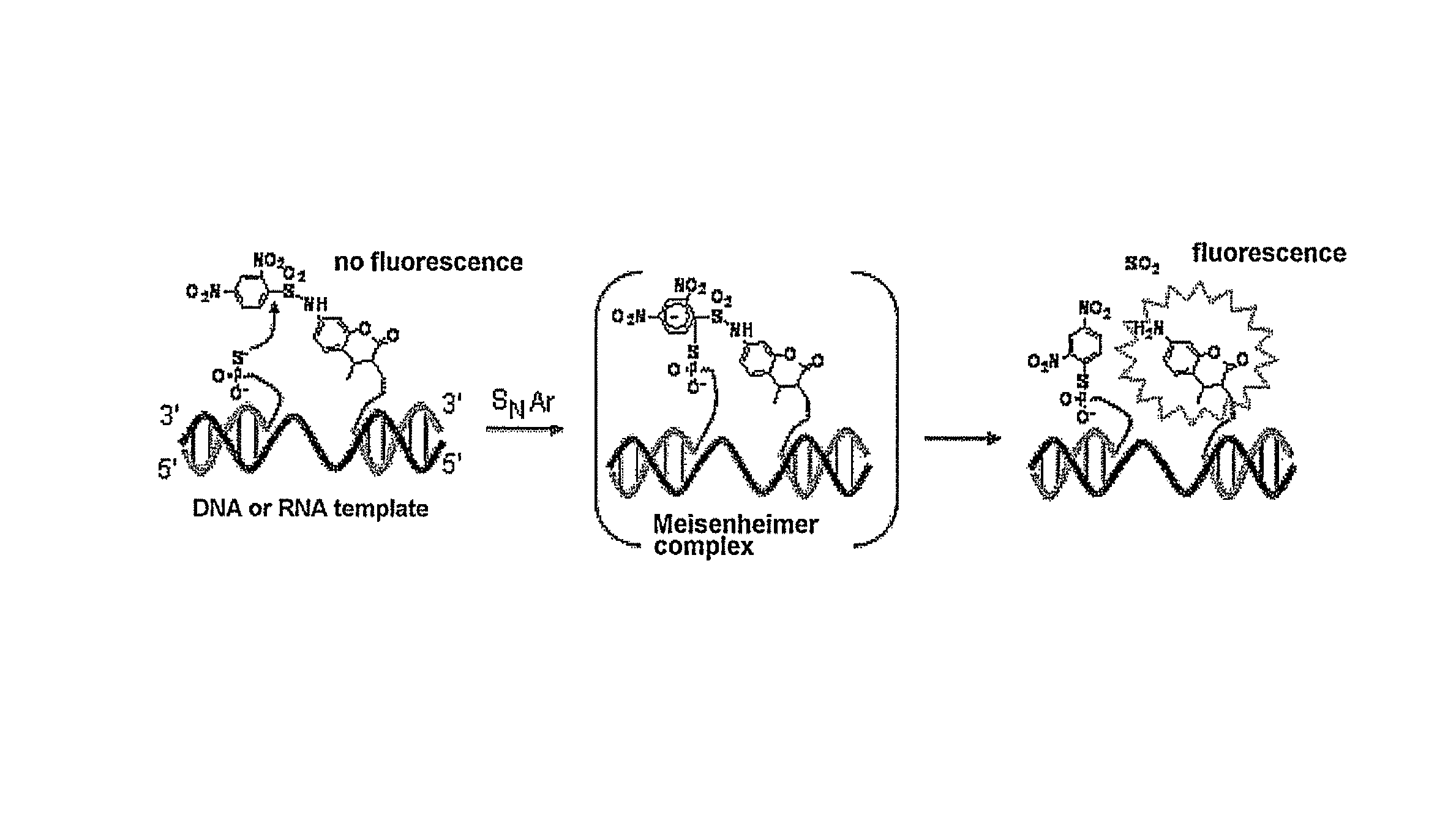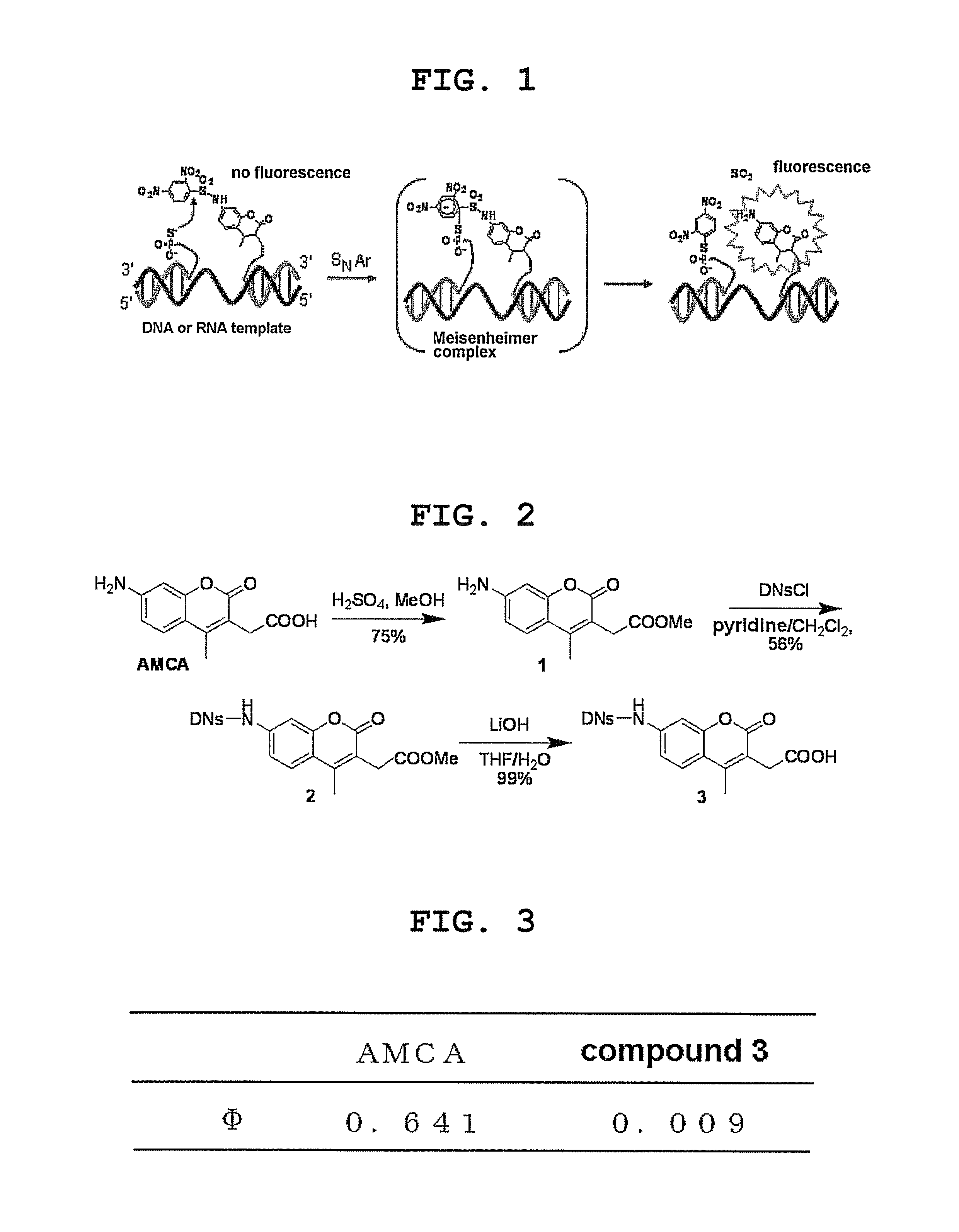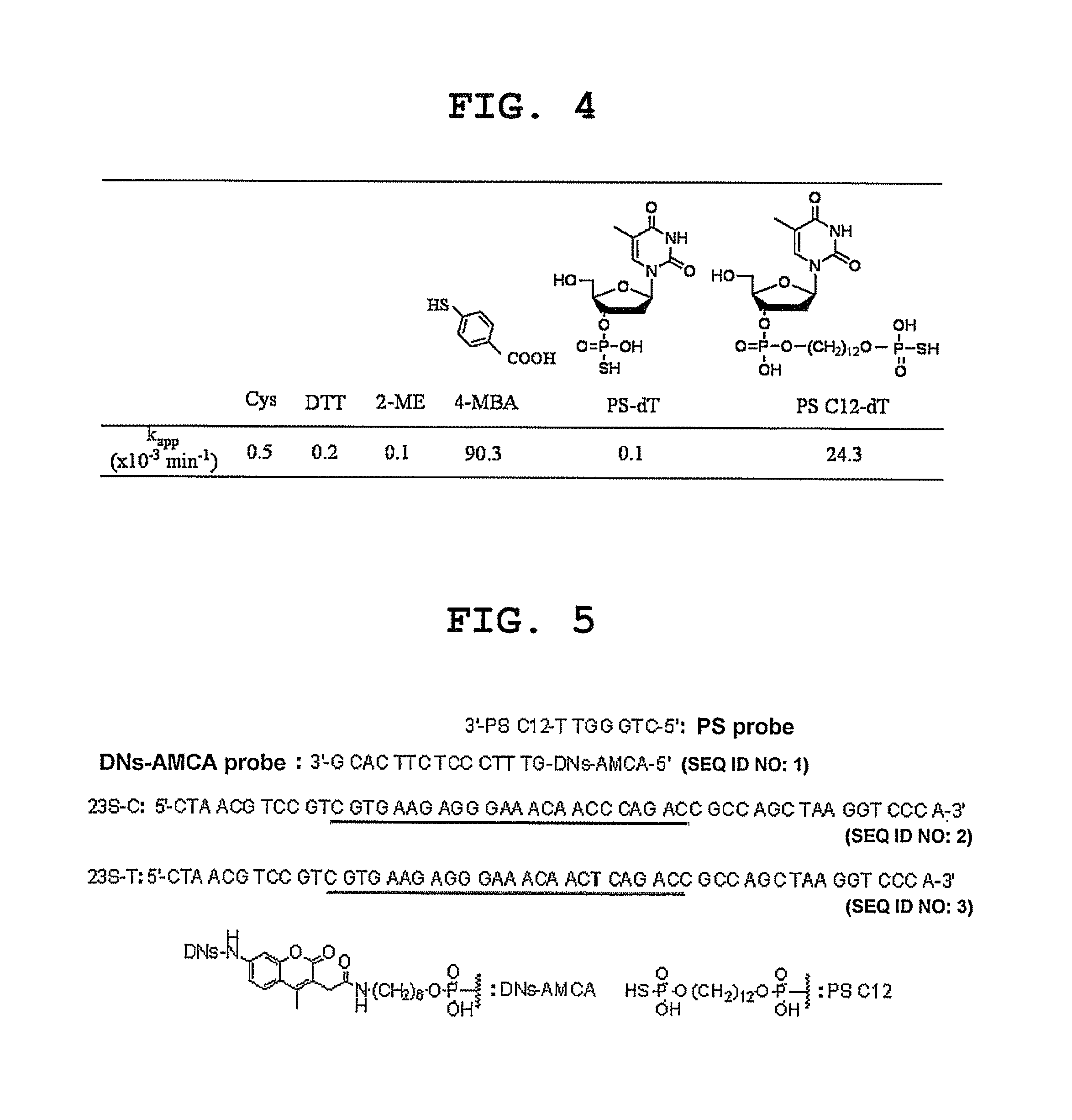Fluorescent molecule and method for detecting target nucleic acid
a fluorescent molecule and target nucleic acid technology, applied in the field of fluorogenic molecules, can solve the problems of high background fluorescence signal, difficult high sensitivity measurement, and easy oxidation of the reducing agent phosphine in a solution, and achieve high signal-background ratio, high signal-background ratio, and high detection efficiency.
- Summary
- Abstract
- Description
- Claims
- Application Information
AI Technical Summary
Benefits of technology
Problems solved by technology
Method used
Image
Examples
example 1
Organic Synthesis of DNs Derivative of 7-aminocoumarin (see FIG. 2)
(1) Synthesis of methyl 7-amino-4-methylcoumarin-3-acetate (Compound 1 in FIG. 2)
[0086]7-Amino-4-methyl-3-coumarinylacetic acid (43.1 mg, 0.18 mmol) was dissolved in MeOH (40 ml). H2SO4 (5 drops) was added, and the reaction mixture was heated to 120° C. and stirred. After 4 hr, the disappearance of the starting materials was confirmed, and the reaction mixture was cooled to room temperature. The reaction mixture was concentrated to ⅓ and the mixture was neutralized with aqueous saturated NaHCO3 solution. The reaction mixture was extracted with BuOH, and the organic layer was concentrated. The residue was purified by silica gel column chromatography (eluate: hexane:EtOAc=1:2) to give the object compound (34.4 mg, 0.14 mmol, 75%).
[0087]
[0088]1H-NMR (400 MHz, DMSO-d6): δ7.47-7.45(1H, d, J=8.0 Hz, Ar), 6.58-6.56(1H, dd, J=8.0 Hz, Ar), 6.40(1H, ds, Ar), 6.06(2H, s, NH2), 3.59(2H, s, CH2CO), 3.30(3H, s, CH3), 2.27(3H, s, C...
example 2
Synthesis of Oligonucleotide
[0095]All oligonucleotides were synthesized by a DNA automatic synthesizer (H-8-SE; Gene World) using a 0.2 μM scale column based on a general phosphoramidite method. A base was deprotected and cut out from a CPG carrier by incubating in aqueous ammonia at 55° C. for 4 hr. Oligonucleotide was purified by reversed-phase column (MicroPure II; Biosearch Technologies), and the concentration was determined by measuring the UV absorbance.
example 3
Measurement of Fluorescence Quantum Yield (see FIG. 3)
[0096]The measurement was performed for 7-amino-4-methyl-3-coumarinylacetic acid (ANCA) and 7-(2,4-dinitrophenylsulfonamido)-4-methyl-3-coumarinylacetic acid (compound 3) in a 0.1 M phosphoric acid buffer (pH 10) using a fluorescence spectrophotometer (FP-6500; JASCO). Each compound was excited at 375 nm. The quantum yield was determined by 4-methylumbelliferone (0.63) as a standard.
PUM
| Property | Measurement | Unit |
|---|---|---|
| pKa | aaaaa | aaaaa |
| pKa | aaaaa | aaaaa |
| carbon number | aaaaa | aaaaa |
Abstract
Description
Claims
Application Information
 Login to View More
Login to View More - R&D
- Intellectual Property
- Life Sciences
- Materials
- Tech Scout
- Unparalleled Data Quality
- Higher Quality Content
- 60% Fewer Hallucinations
Browse by: Latest US Patents, China's latest patents, Technical Efficacy Thesaurus, Application Domain, Technology Topic, Popular Technical Reports.
© 2025 PatSnap. All rights reserved.Legal|Privacy policy|Modern Slavery Act Transparency Statement|Sitemap|About US| Contact US: help@patsnap.com



